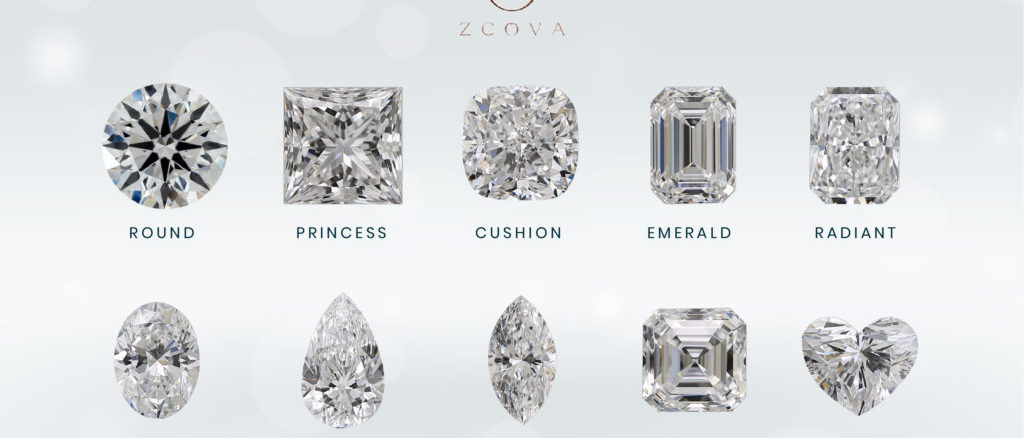
Diamonds are a girl’s best friend, but they are also not always what they seem. There’s quite a lot to buying a quality diamond without spending too much.
If you’re thinking of getting engaged or simply buying yourself a diamond, learning about the different facets of diamonds will help you get the best value for your money and get exactly the type of stone you want. You might want a particular shape or size, but you might not know how to go about it.
There are in fact some facets of diamonds that impact how they look, but not necessarily how much they cost – and vice versa. If you know which is which you can buy a diamond that looks great, while avoiding paying premiums for the elements you won’t value.
Here’s a useful guide on how to pick the best value diamond you can.
#1 Choose your diamond shape
The first thing is to choose the shape of your diamond. The shape of a diamond does not have a huge effect on the diamond’s appearance (it still looks like a beautiful thing at the end of the day), but it has a considerable effect on its price.
The round and brilliant diamond is the most sought-after diamond shape for an engagement ring, and so it is often the most expensive, but you can explore alternative shapes such as the cushion or oval shape. These more unusual shapes are rarer and you, as a buyer, can get a higher specification of stone for the same price (than you would for a popular, round diamond).
Have a look here to see the different shapes available:
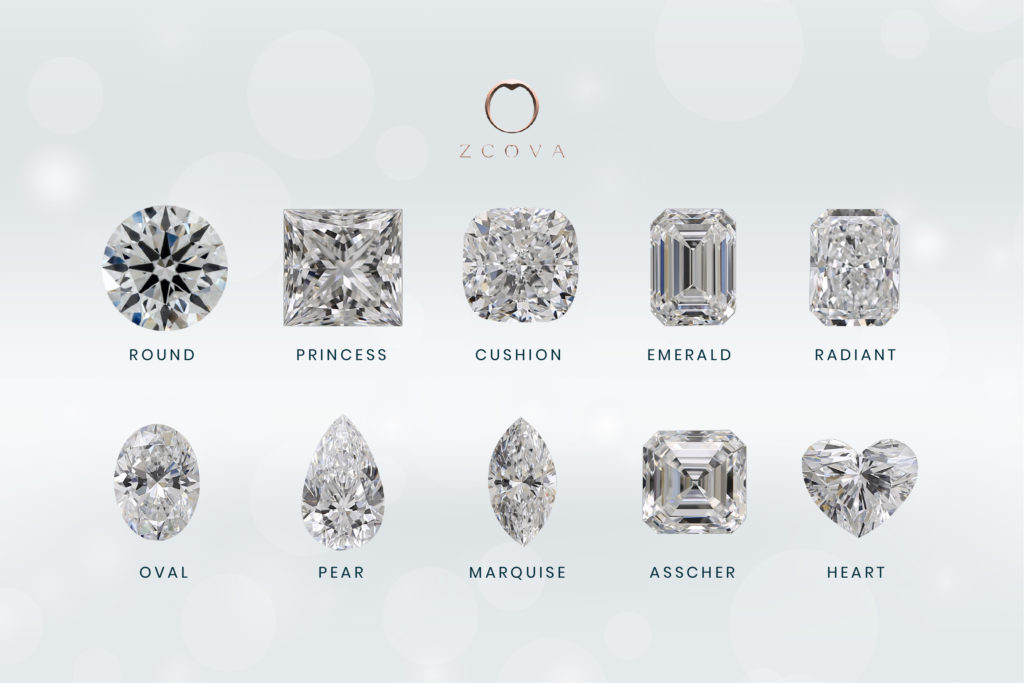
#2 Carat Weight
The weight of a diamond is expressed in carats (CT). One carat weighs the equivalent of 0.2grams and equals 100 points.
You will often hear diamonds spoken about in terms of carats and that’s because the diamond’s weight is important for both its appearance and its price.
It is hard to know, however, how many carats is enough for what you are looking for, so the best way is to focus on your price range and find the best diamond specifications for that price, without comprising on quality.
One tip for buyers is to always buy a carat just below the next level of carat. So, for example, if you want a 2.00CT diamond look for a 1.9CT diamond and it will look the same but be much less expensive!

#3 Triple Excellent Cut
A diamond’s cut grade is how well its facets interact with light. The cut really is the thing that makes a diamond look beautiful. Without it, the diamond will look dull and dark.
The quality of the cut has a big impact on the appearance of the diamond – and on its price.
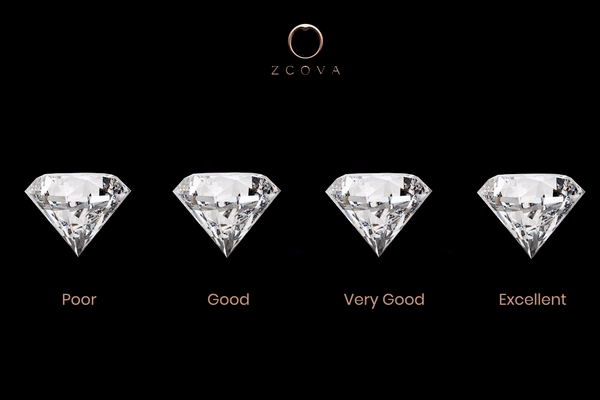
#4 Diamond Clarity
Clarity refers to the inclusions and blemishes in the diamond. The clarity of a diamond does not have much impact on its appearance to the naked eye- and yet it does have an impact on price.
If you want a balance between clarity and price, you can choose a diamond that is between Internally Flawless (IF) and VS2 clarity. If there are any inclusions – or minor flaws – in VVS1 and VVS2 and VS1 and VS2, the biggest of them will only be visible under 10x magnifications or more.
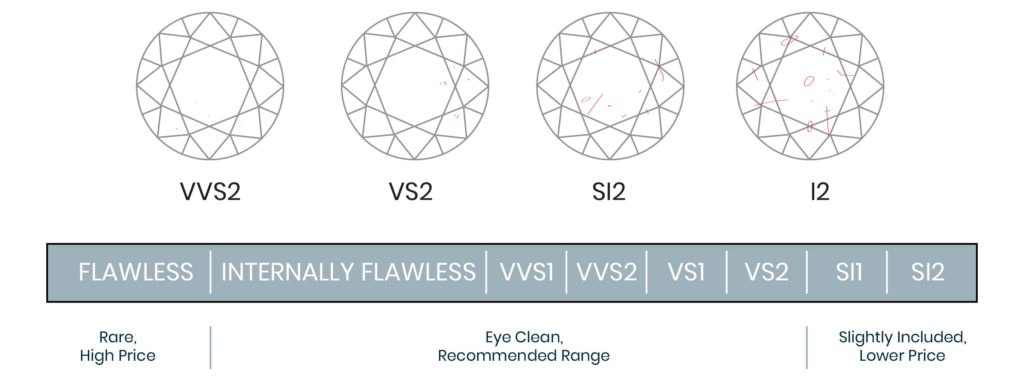
#5 Diamond Colour
The colour of a diamond has a slight effect on its appearance buta large impact on its price. If you look at the colour ranges in the picture, to the untrained eye, D/E/F are almost identical so you can see that choosing an F colour is good enough for a colourless diamond unless you would like to invest in a more colourless diamond. Knowing this will help you be savvy about which stone you pick.
The diamonds in the G-J range have slight yellowness. The slight yellowness of the G and H colour diamond is noticeable but only if you compare the diamond side by side with a D/E/F diamond- it is almost unnoticeable if the diamond stands by itself. Therefore G&H diamonds strike a good balance between colour and value.
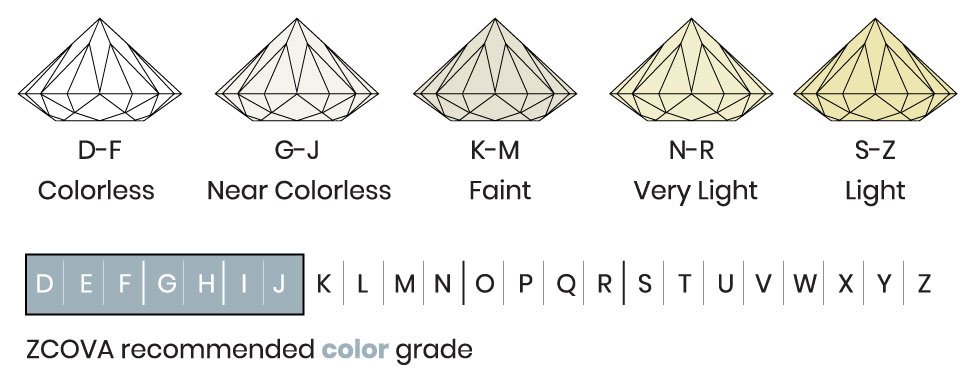
#6 Diamond Fluorescence
Most brands do not talk about diamond fluorescence. Some diamonds emit a bluish or yellowish light when exposed to ultraviolet (UV) rays like the sun or fluorescent lamps. Strong fluorescence may result in a milky appearance with diamond colour ranges from D-H colour, whereas it may improve the colour appearance for colour ranges from I-M.
Fluorescence does have an impact on the diamond’s appearance and so diamonds without fluorescence are more expensive- but you may want to avoid fluorescence, despite the price difference, as it does have a clearly visible impact.
On the left, a group of seven diamonds under daylight-equivalent illumination. On the right, the same diamonds fluorescing under long-wave UV illumination. Photo: Kevin Schumacher/GIA
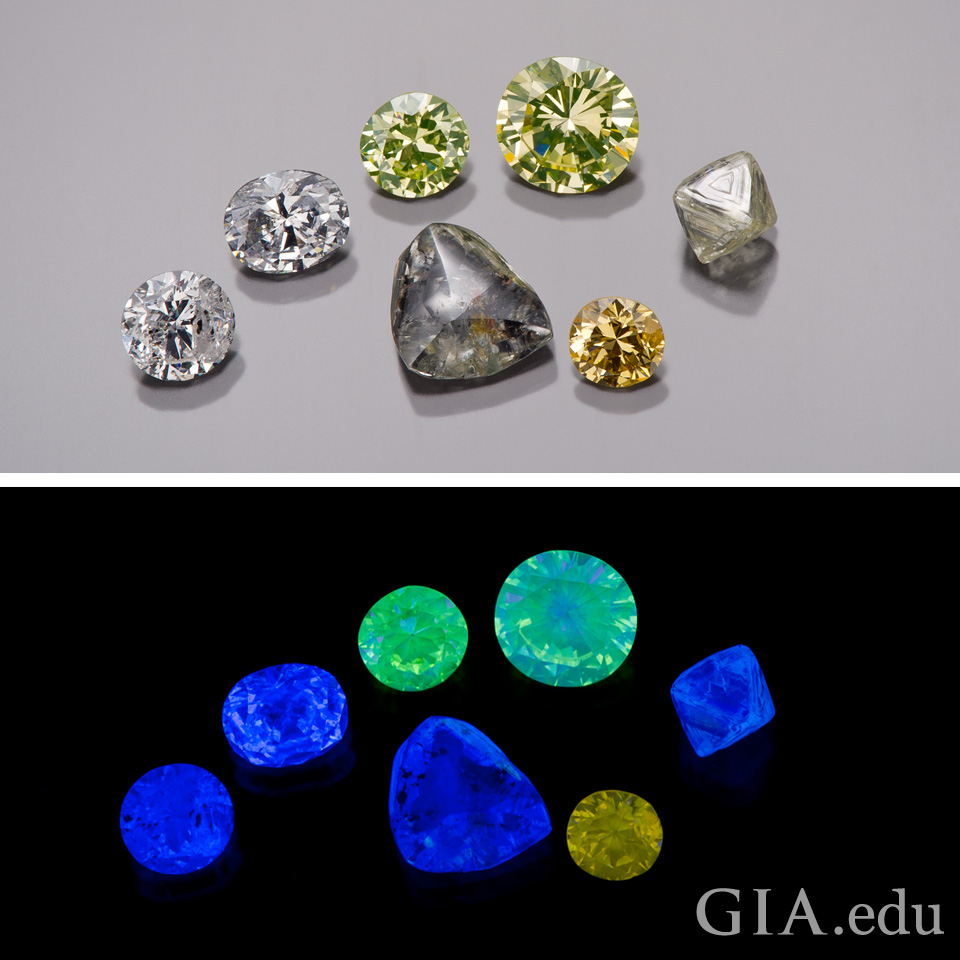
#7 Diamond Brilliance
Finally, the top thing most people notice after carat (how big and heavy the diamond is) is brilliance.
Two diamonds with the same specifications can have different levels of brilliance (or how shiny they appear). Brilliance is really the magic factor in choosing a great diamond for jewellery. It has a big impact on the appearance of the diamond but no impact at all on the price!
GemEx Light Performance (Brilliance, Fire and Sparkle) can be identified with special certificate.
Ideally, your diamonds would have a GIA certificate and a GemEx certificate.
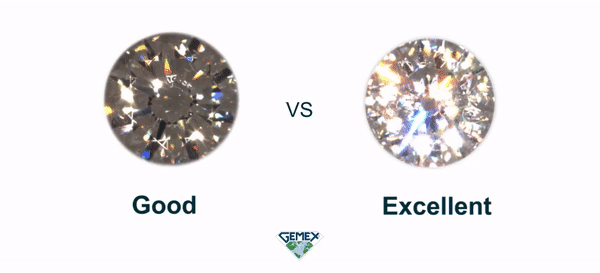
SheSociety met innovative online diamond retail company, ZCOVA recently who gave us the insider track on how to buy diamonds.
ZCOVA sources and sells diamonds directly from international suppliers, eliminating the mark-up costs middle-men wholesalers have traditionally imposed on the industry.
ZCOVA couples this new pricing model with a unique, transparent, two-tiered certification process that guarantees the brilliance, fire and sparkle of each gem, equipping consumers with the knowledge required to make the best purchasing decision possible.
ZCOVA’s mission is to change the perception of buying diamonds online, helping customers to understand that buying online is not only up to 40 percent more cost-effective than buying in-store, but also means they can be assured about the quality of their purchase and the value of their investment.
SheSociety is a site for the women of Australia to share our stories, our experiences, shared learnings and opportunities to connect.
